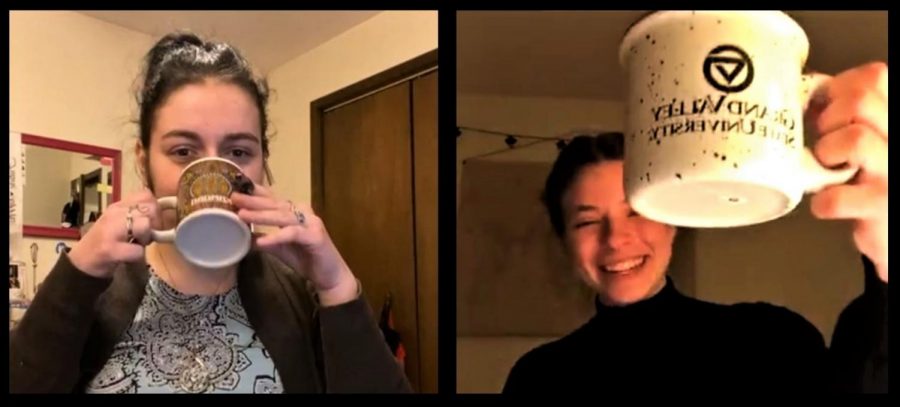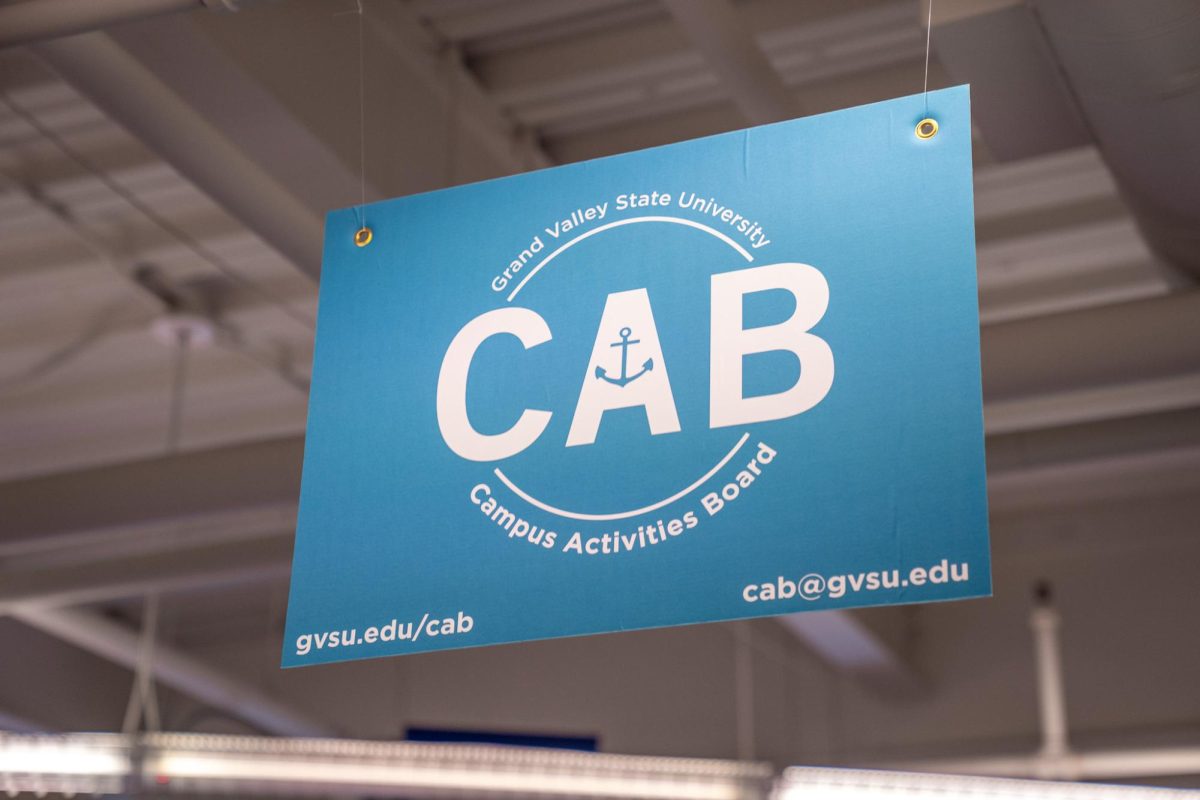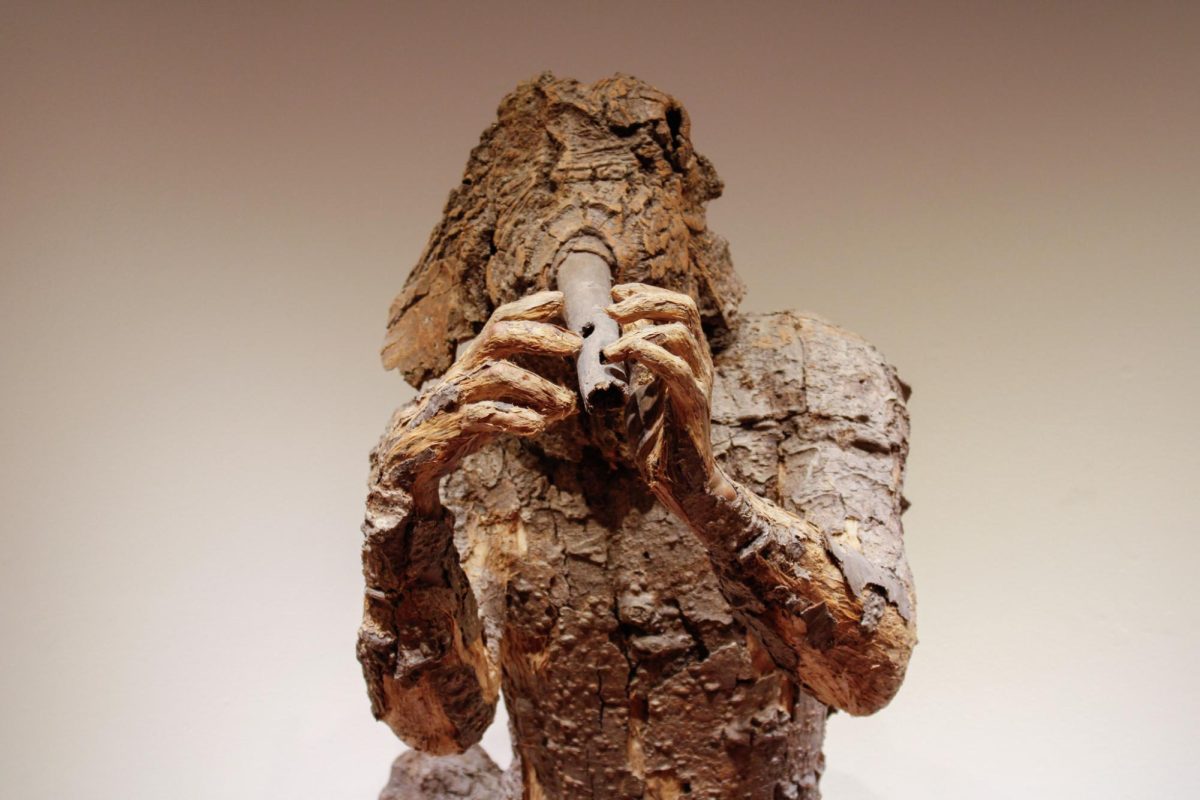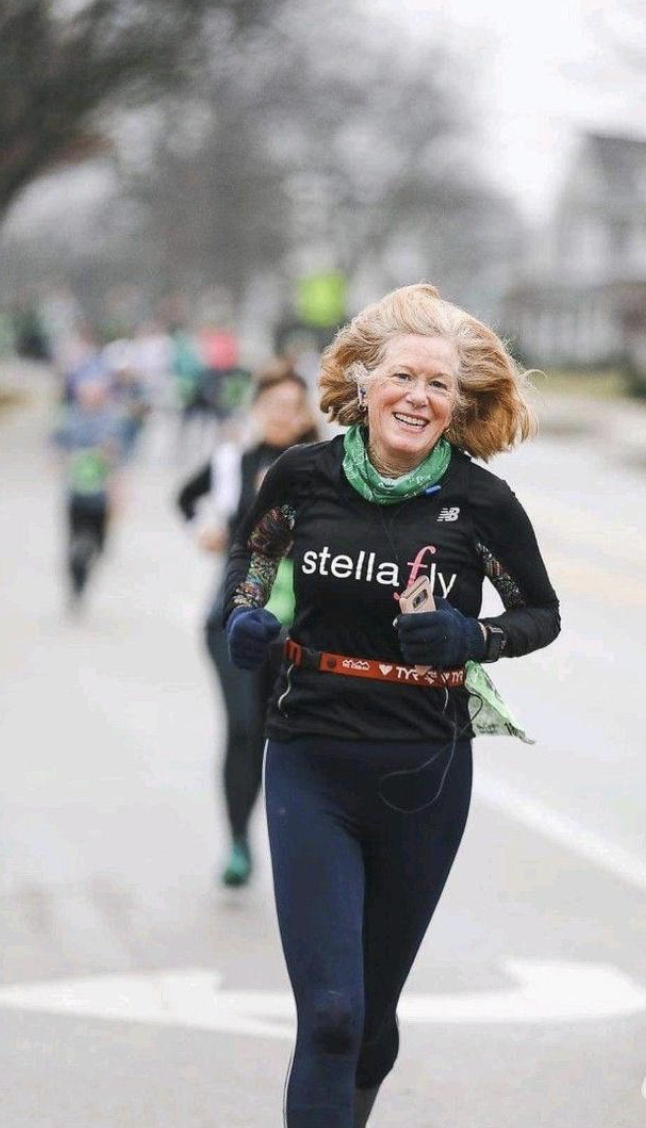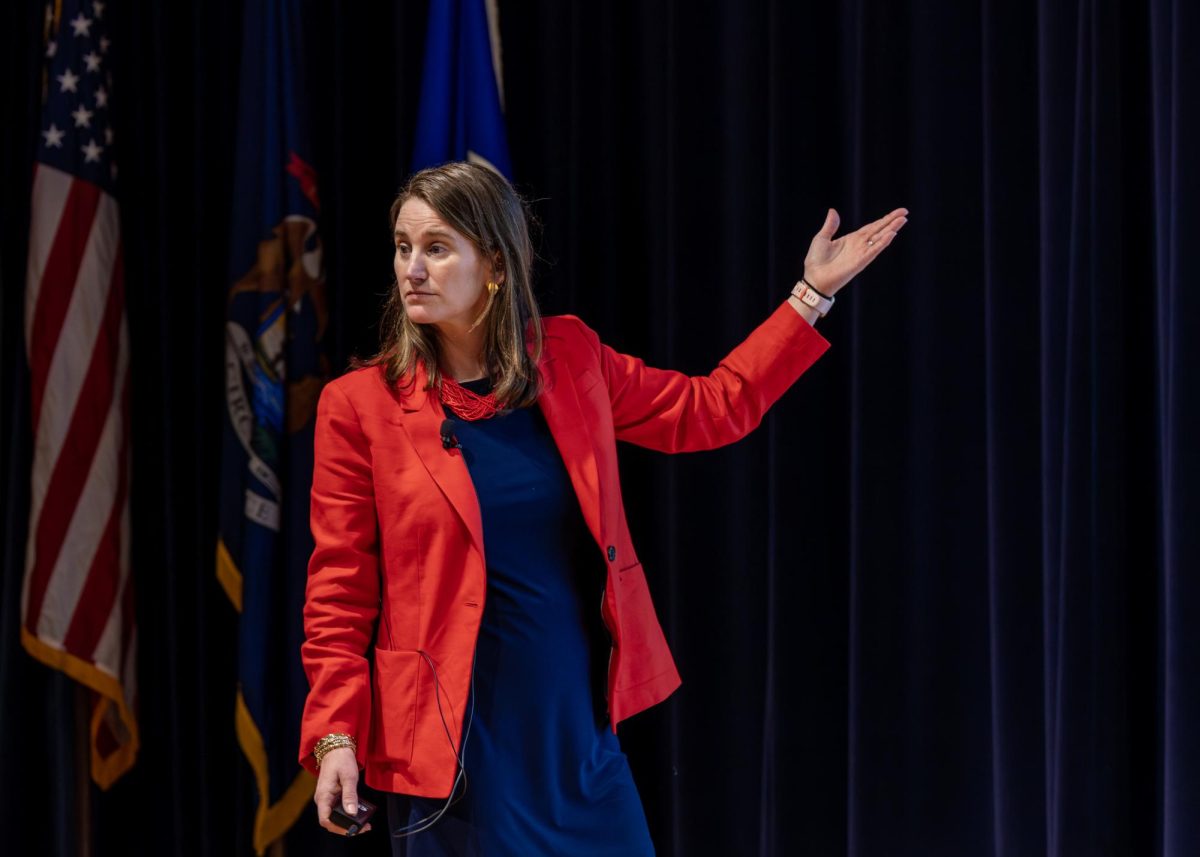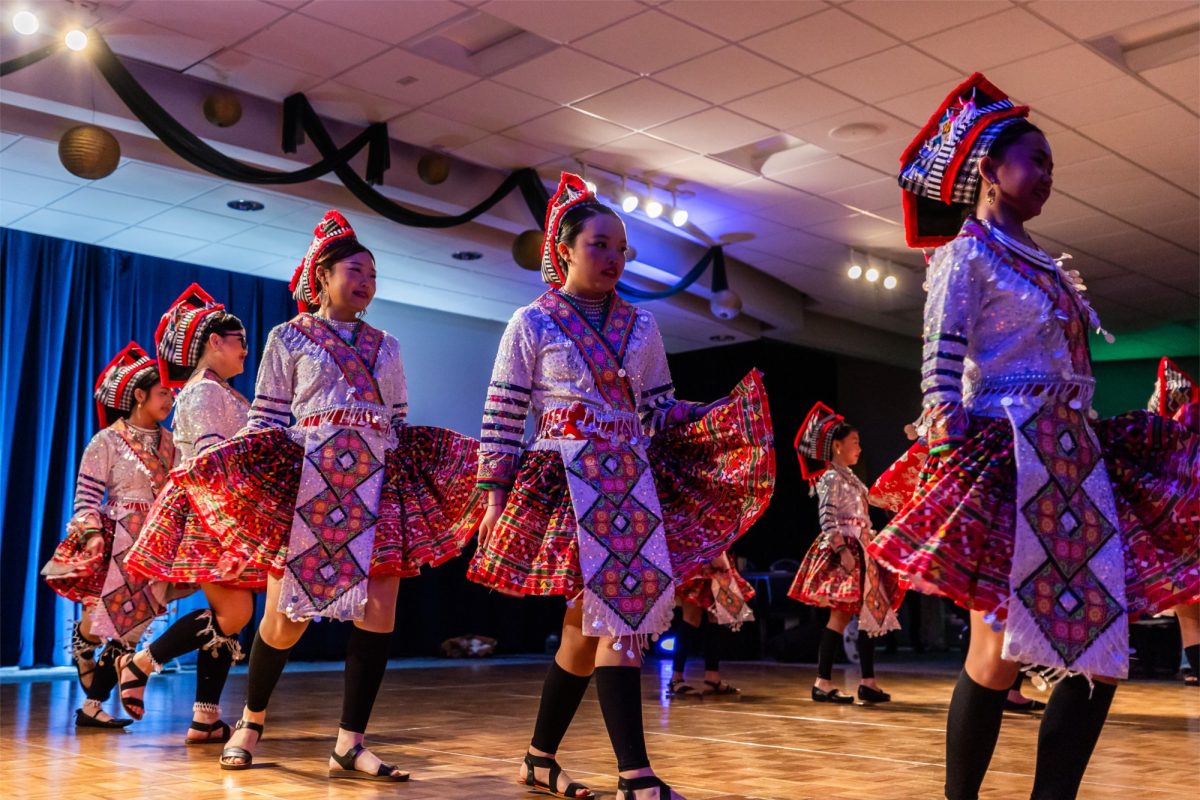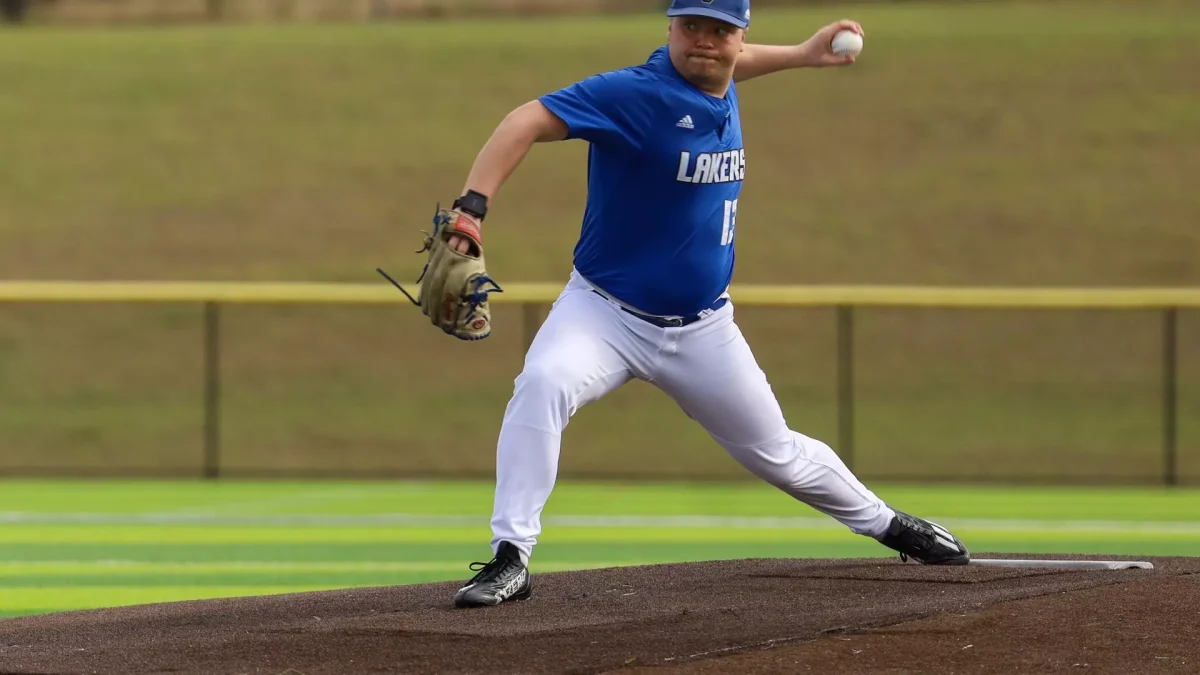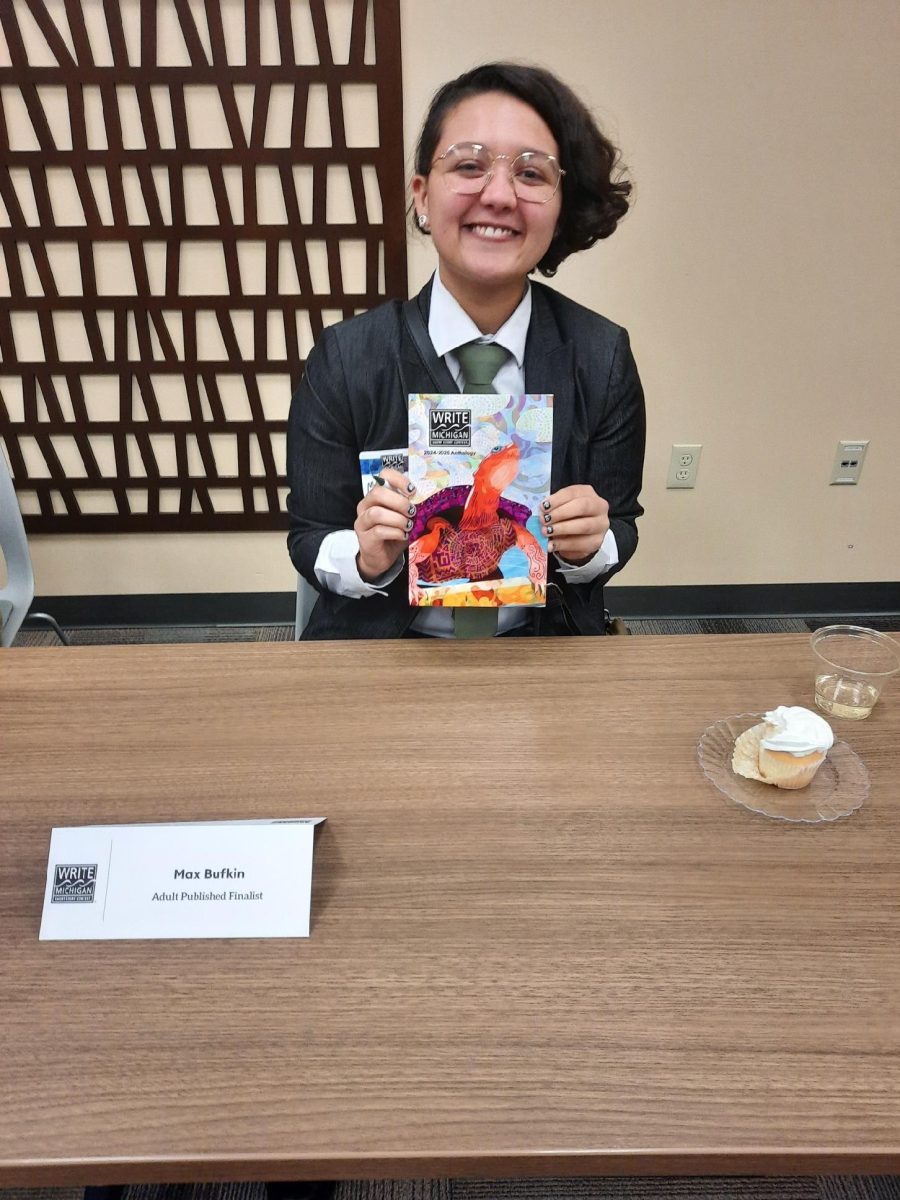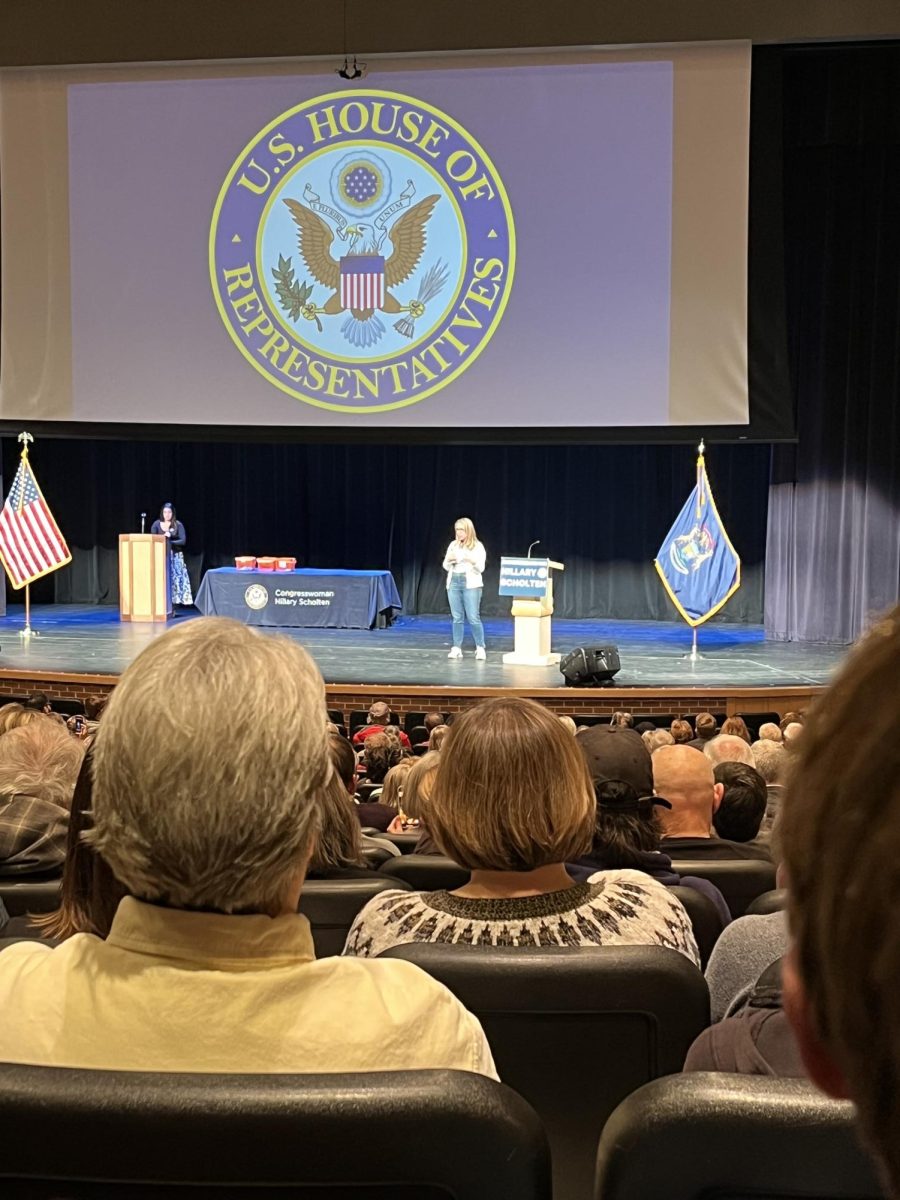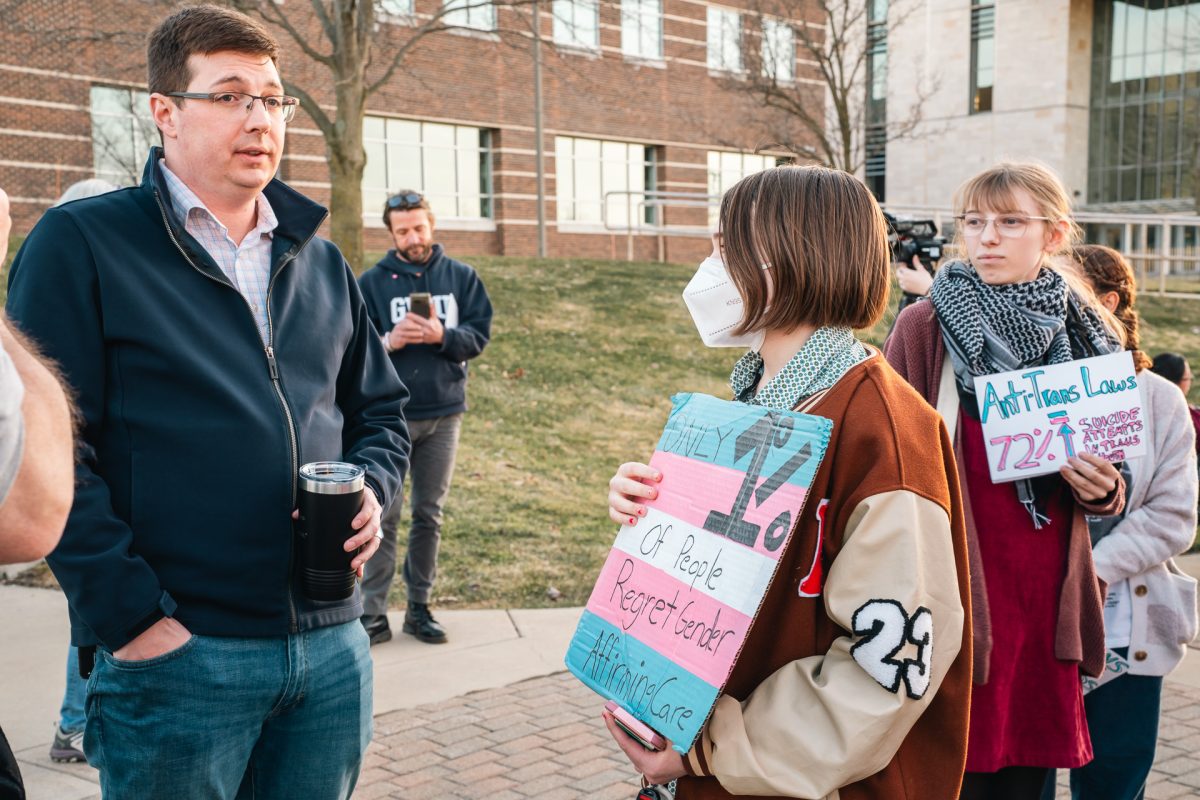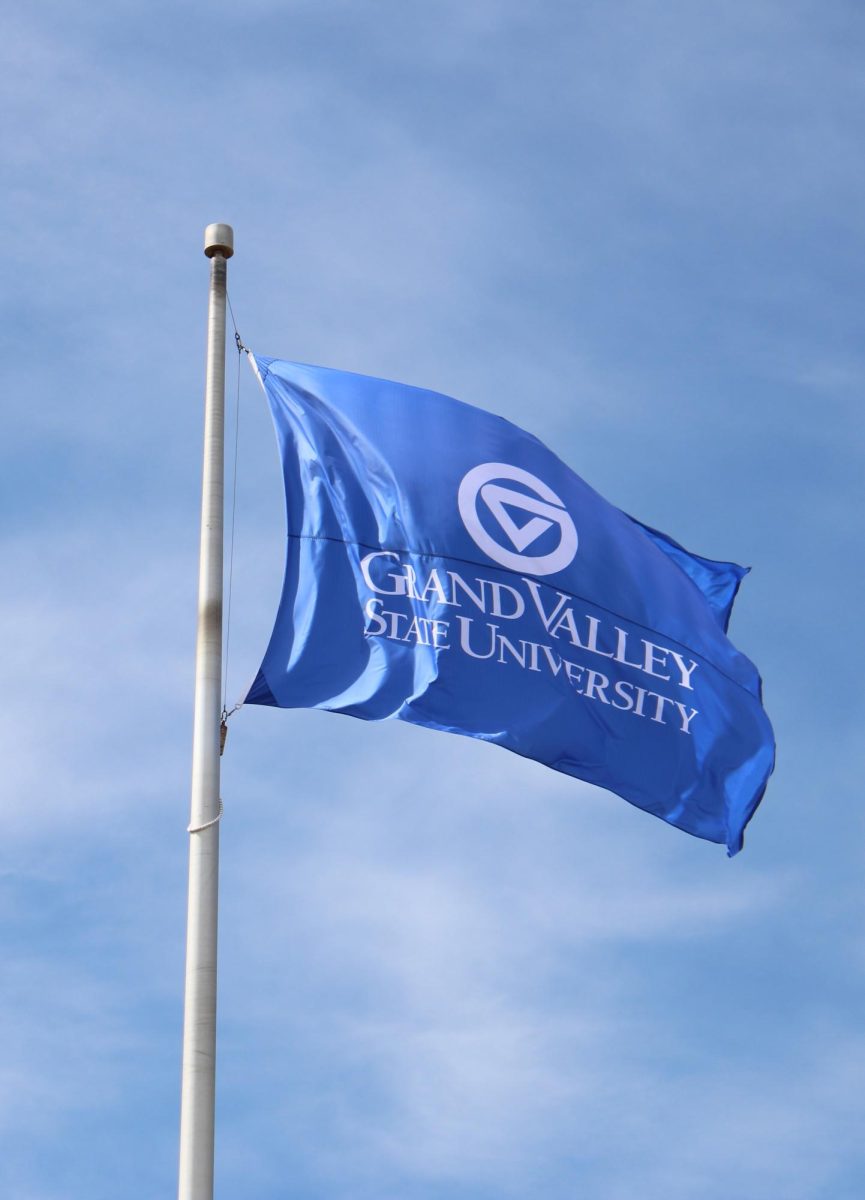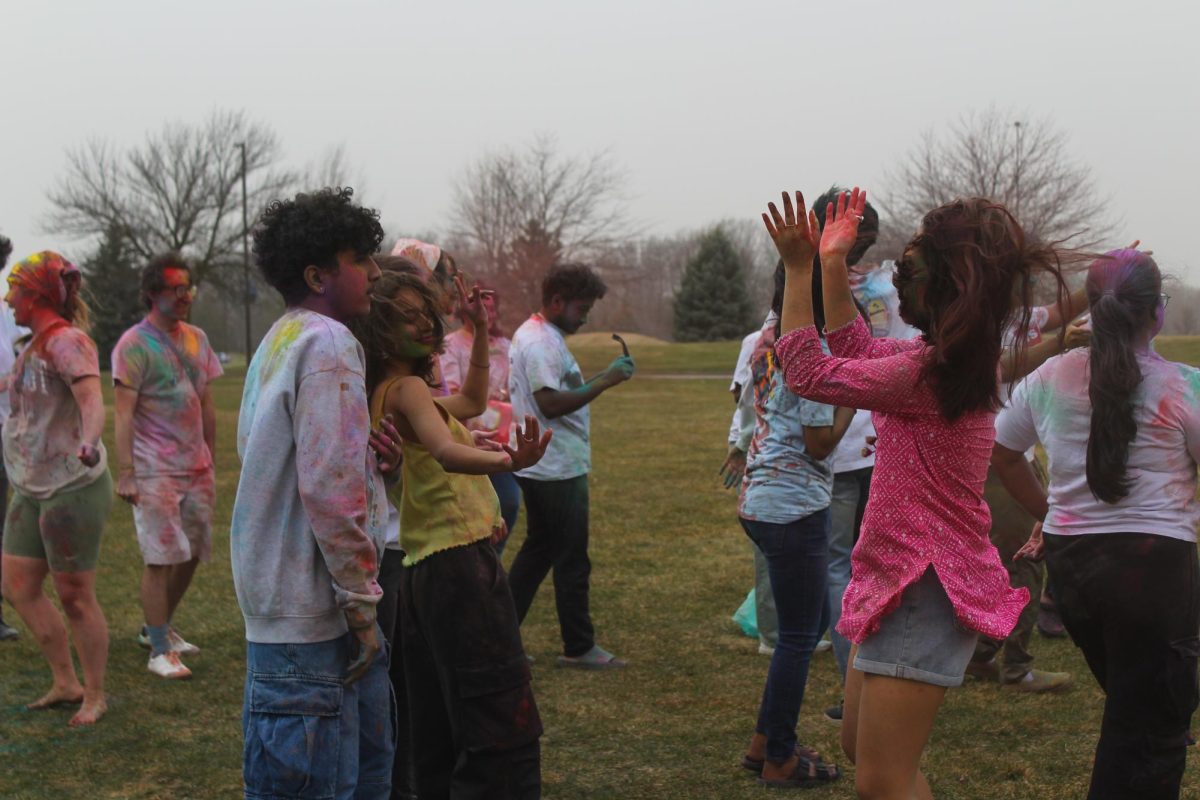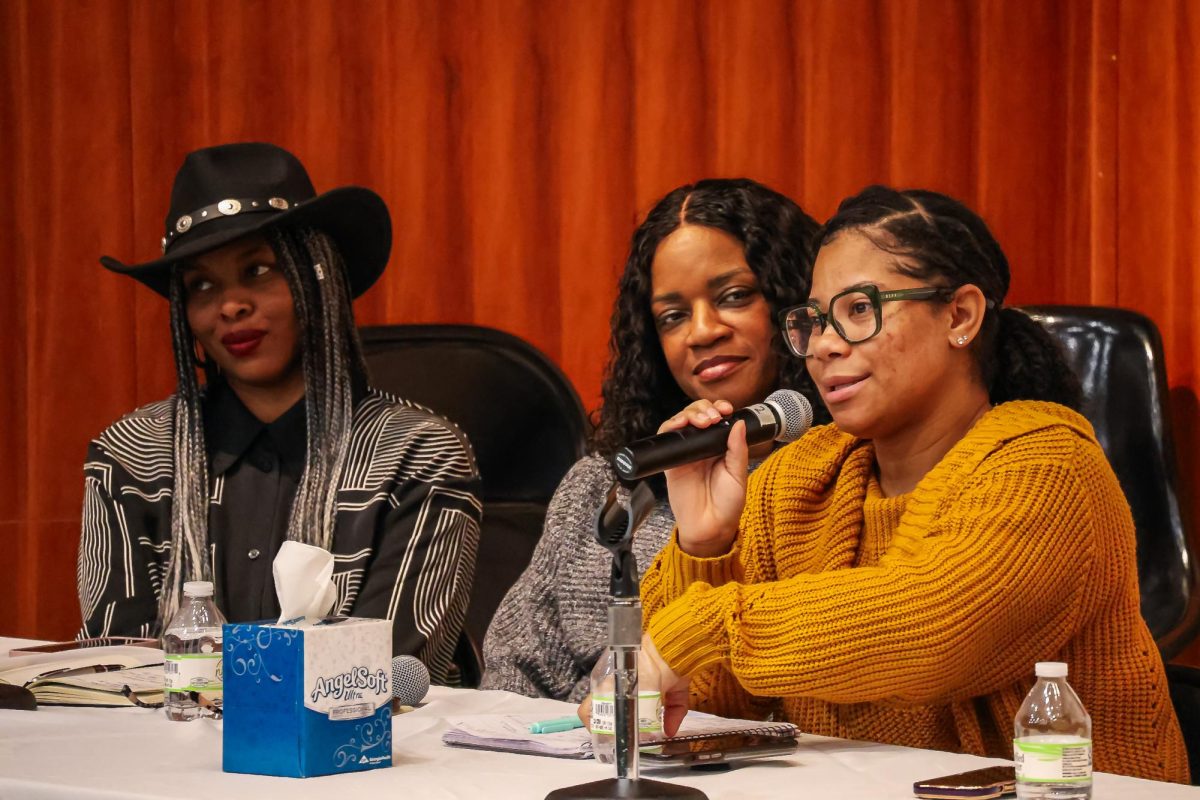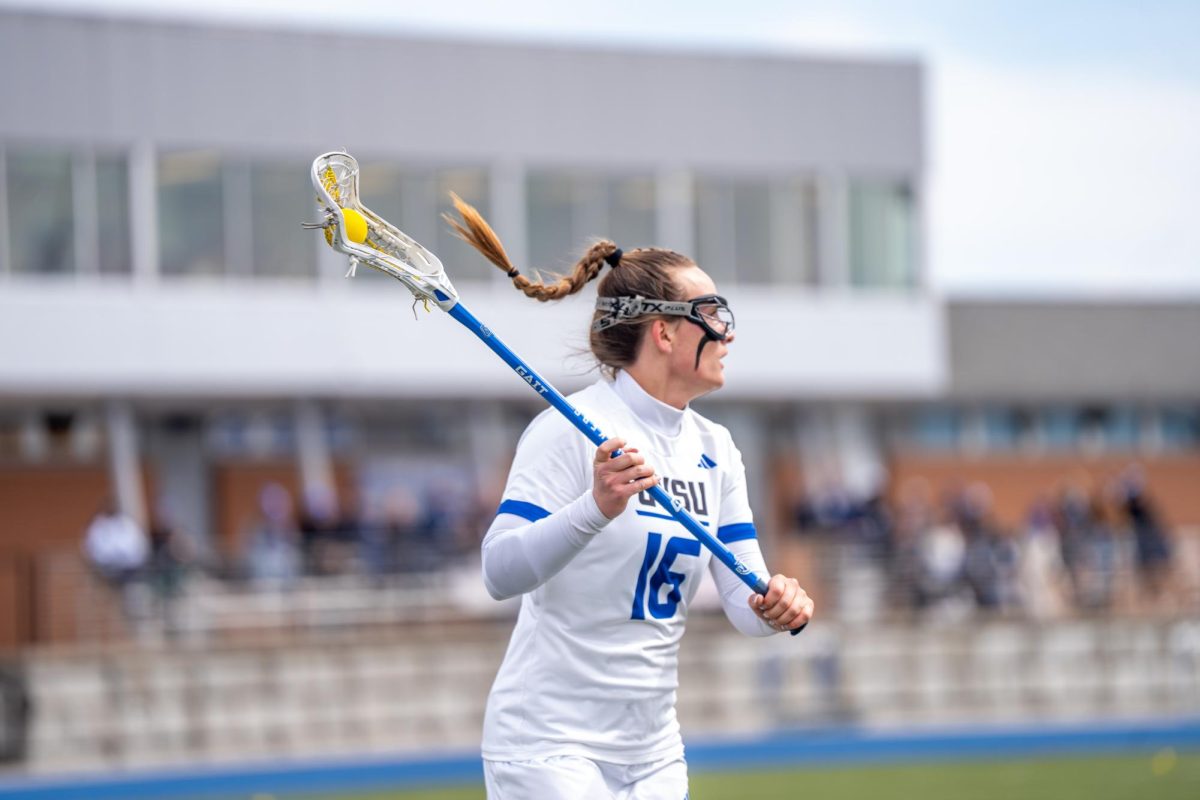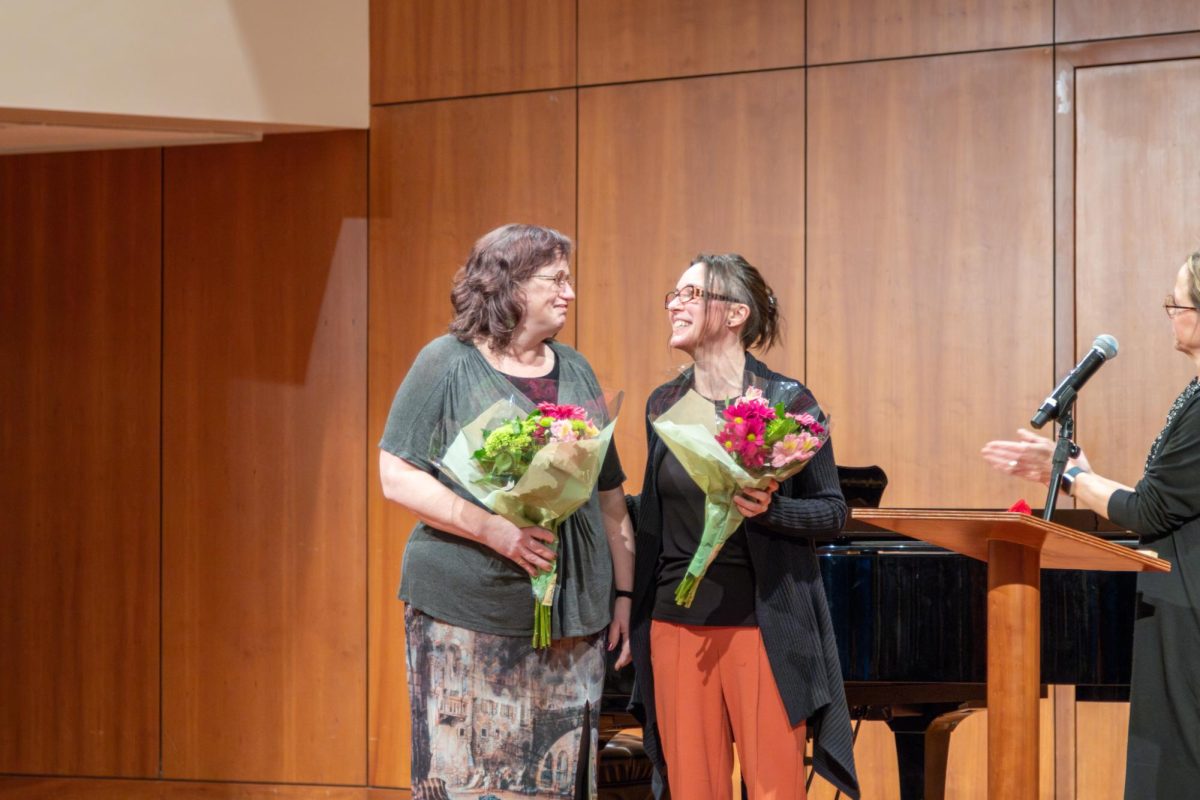CSLC discusses Biden’s executive orders
Kayla Sosa (left) and Jamie Wilson (right) enjoying the titular beverage of the Tea Time discussion show. (GVL Ysabela Golden)
Feb 8, 2021
Grand Valley State University’s Community Service Learning Center has long been encouraging conversations about civics and how to become politically involved citizens, even as the COVID-19 pandemic prevented the kinds of campus gatherings they would have had normally. One quarantine innovation was Tea Time, a biweekly discussion streamed on the CSLC Instagram.
“It’s a student-run, student-led show,” said Kayla Sosa, the Campus Vote Project Fellow and a Civic Engagement Associate at the CSLC. “It’s the most casual space in our department, where we talk about current events and bring in student experts for conversations on those topics.
The beginning of February marked the project’s second season, which began with a conversation on the most important political event of the new year: the presidential transition between Donald Trump and Joe Biden.
“The first ninety days are really going to show us what promises are going to be kept,” said Jamie Wilson, a sophomore in the legal studies program who was newly elected to Grand Valley’s Student Senate for the 2020-2021 school year.
“I’ve been paying attention to the executive orders that he’s been passing,” Wilson said. “I think, in terms of COVID, it’s exciting to have a president who cares about these issues, and I think he knows that the people want a president who cares about it.
From Wilson’s perspective, however, some of the executive orders don’t get enough into concrete specifics to be fully effective.
“I think they’re promising, in theory,” Wilson said. “But I’m noticing some, like the promise to assist in reopening schools safety, that seemed a little broad to me. How are we actually going to move forward with that?”
The order in question, titled “Executive Order on Supporting the Reopening and Continuing Operation of Schools and Early Childhood Education Providers,” discussed not only schooling for children but higher education institutions like Grand Valley. It promised to create health and safety guidelines to advise education authorities, to provide “technical assistance” both for learning and contact tracing, and to facilitate data collection on how COVID-19 has been affecting schools (as well as examining how the effects may have been worse for some demographics than others).
As Wilson pointed out, the executive order has been criticized for pushing an effort to reopen schools as quickly as possible without fully considering the realities of the situation. Virus experts and teacher unions alike have expressed that schools need to return to normal gradually. Rather than push for all in-person teaching, they advise that remote and hybrid learning remain an option (potentially even into the 2021-2022 school year), as well as that schools have centralized data on how many cases are occurring and clear standards for returning to quarantine if and when spikes in cases occur.
Sosa pointed out another common criticism of Biden’s large number of executive orders: they’re blanket solutions, not resolutions being passed and ratified through congress.
“I did see that, compared historically, he’s set a record for the number of executive orders he’s made within the first week,” Sosa said.
Biden did sign more executive records than his immediate predecessors, making him somewhat of a record holder among modern presidents. George W. Bush didn’t even make a single executive order until nine whole days after his inauguration in 2001, whereas Biden signed seventeen on his first day in office on Jan. 20. Of course, Biden was inaugurated in the middle of a global pandemic, which is hardly business as usual for the United States.
The relative effectiveness of executive orders has long been a subject of question; they allow for fast action, but cannot contradict congressional statute and are easily undone by the next president who comes into office. Several of Biden’s own executive orders have done just that; one from a recent batch on Feb. 2 was a reversal of Trump’s order justifying separating families at the border, creating a task force to recommend steps to reunite separated families.
“I think right now he’s just trying to show, ‘these are the issues I care about,’” Wilson said. “They’re very bold claims, but it makes you wonder how they’re actually going to be effective.”
Those interested in watching future live streams of Tea Time can find a full schedule of dates and topics on the CSLC’s website at gvsu.edu/service, as well as watch upcoming and archived episodes on their Instagram @gv_cslc.





